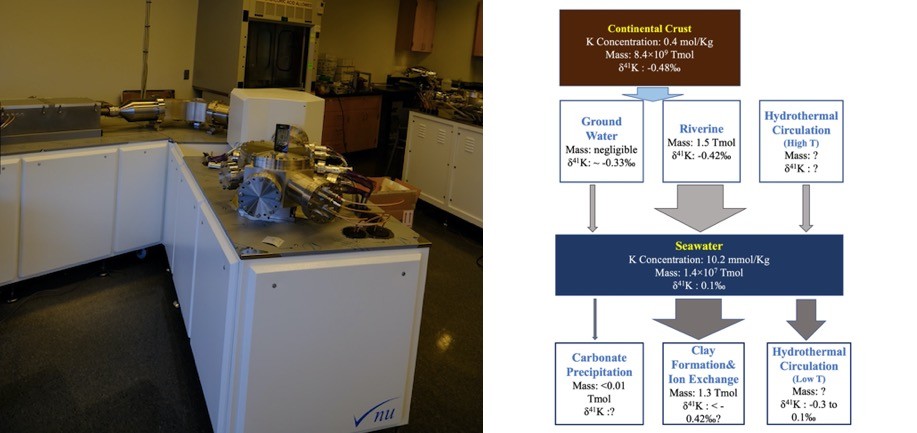Our research focuses on how we can use non-traditional (metal) isotopes much more effectively to explore a vast array of processes about Earth’s formation, mechanisms of climate change and the evolution of life.
Current projects:
Zinc (Zn) deficiency due to insufficient Zn intake affects 1/3 of world’s population. By 2050 additional 138 million people is estimated to suffer from Zn deficiency due to the reduction of global availability of Zn. Therefore, there is an urgent need to find sustainable ways to combat Zn deficiency in humans which is strongly correlated to dietary Zn intake from crops grown on Zn deficient soils. This study uses a multidisciplinary approach combining stable isotope geochemistry, plant physiology, soil science and ecology to identify low-resource strategies for mitigation of Zn deficiency in soil-crop system. (Kathrin Schilling)
Antimony is moderately volatile element; i.e. it did not fully condense in the rocky planet forming region of the Solar System. Later processes, such as planetary accretion and the moon forming impact may have further reduced the Sb budget on Earth. Antimony is also a priority pollutant (WHO). Antimony levels above safe guidelines can occur due to human pollution, such as around regions where it is mined, or it can be naturally high. Antimony pollution is a concern for a number of reasons, it is a carcinogen, and it also decrease the productivity of rice plants, while becoming enriched in the kernels. (Matthew Jerram)
Potassium is a major element in the Earth’s crust and a vital nutrient in biology. Recent advances in Multi-Collector ICP-MS now permit precise measurements of natural variability in the 41K/39K of terrestrial materials at the ∼0.1‰ or even better level.
This project focuses on understanding behaviors of K and its isotopes throughout global geochemical cycle. We are using next generation of Multi-Collector ICP-MS (Sapphire from Nu) to characterize isotopic compositions of major K reservoirs, and exploit small variations of K isotope ratios among different terrestrial samples, ranging from fresh basalts, to the products of continental weathering, to ocean sediments.
This project is aiming to develop K isotope tracers as geochemical tools to investigate recycling of crustal materials into mantle by subduction, the role of chemical weathering to geochemical budgets, and chemical evolution of oceans. (Heng Cheng)

This project focuses on using the fractionation of stable Ni isotopes in high temperature rocks to investigate compositions of mantle sources and mantle mixing. We use double spike to correct for instrumental mass bias.
Rock samples are dissolved in acid and then purified over several days using a series of ion exchange columns until only Ni remains. The pure Ni sample is analysed with a MC-ICPMS, and the amounts of the different isotopes are measured and compared to the same isotopes in a standard.
The resulting isotopic composition can be used to identify how materials with distinct Ni compositions mix and react to Earth processes, such as melting and mineral segregation. Understanding such processes on Earth can allow us to apply that understanding to other planetary bodies, such as our own Moon. Formation of the Moon and understanding the differences between the Earth and the Moon have been of interest to Science for generations, and the more tools we can use to investigate, the better! (Naomi Saunders)